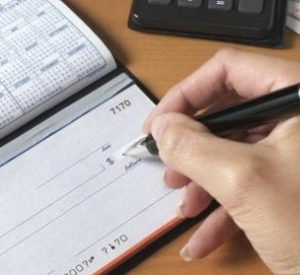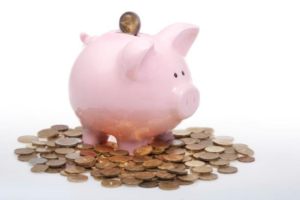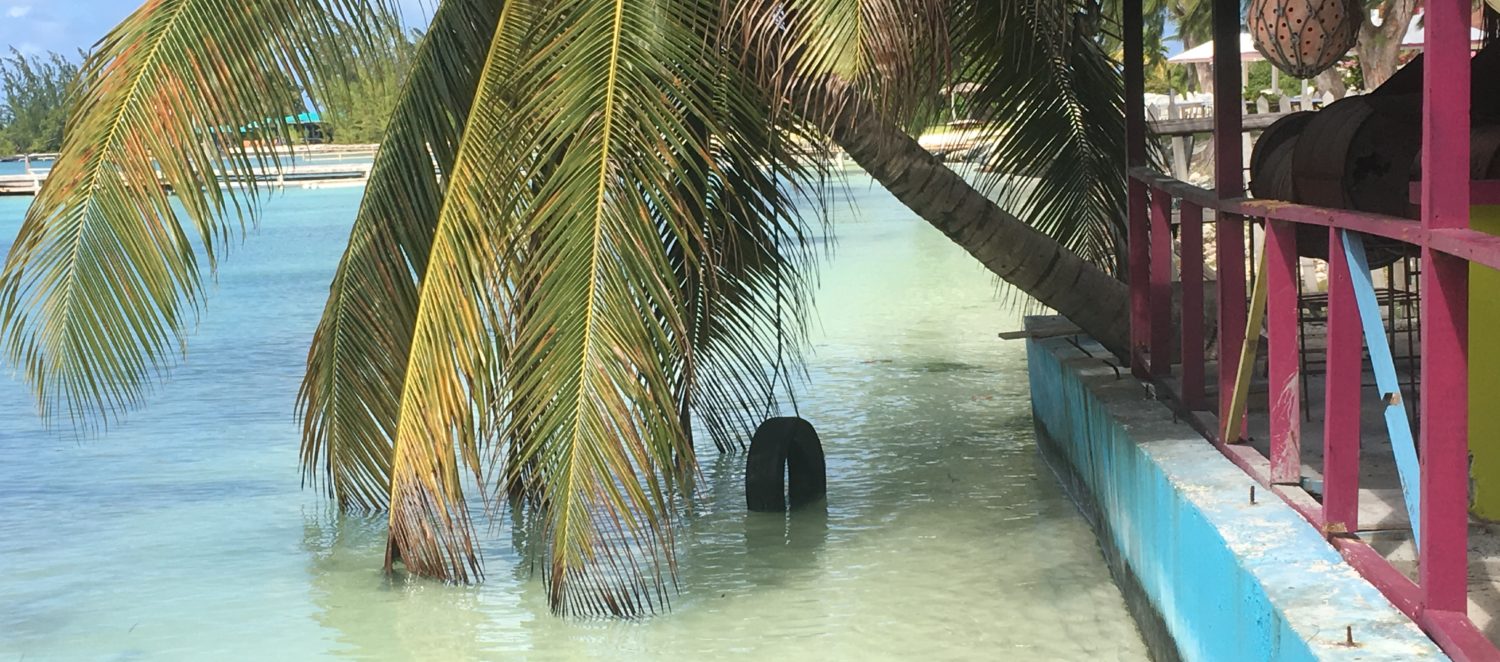 The decision to buy a suitable boat for living aboard or cruising will be a major financial transaction on the scale of buying a house. Whether we’re talking about a multi-million dollar boat or a hundred thousand dollar boat, most of us are not in a position to just reach in our pockets to make that happen.
The decision to buy a suitable boat for living aboard or cruising will be a major financial transaction on the scale of buying a house. Whether we’re talking about a multi-million dollar boat or a hundred thousand dollar boat, most of us are not in a position to just reach in our pockets to make that happen.
To put yourself in a position to buy a boat and go cruising, it will take planning, saving, and of course some source of income to enable all of this. What we came to learn was that after putting ourselves in a position to be able to buy the type of boat we wanted, paying for it with the cash we had saved was not necessarily the best way to purchase it.
There are many financial planning resources available, both professional and amateur (which are sometimes better) to get you started so we’ll only spend a little time here detailing how we came to be in a position to decide “how” to pay for the boat. Lots of great books have been written on this topic such as The Wealthy Barber, The Automatic Millionaire, and Rich Dad, Poor Dad. Basically, unless you already have the money, the wave-tops of anyone’s path to getting there, including ours, tend to be as follows:

1. Start saving money. Before you go any further on any plan, go do this now. Do this even if you’re not planning to buy a boat. It doesn’t matter how much, or your individual situation, just make it more than you’re currently doing. This includes paying off your debt. It should be quite easy for most people to consistently save no less than 10% of their net income. You just have to decide to do it.

2. Stop buying stuff. This may sound a bit curt or even a strange idea, but track your discretionary spending over a few months and you’ll be surprised at what is going out that you could be saving and using to pay off your debt. This is how you accomplish point 1 above, even if you don’t think you can. Since we have no kids or pets, we were able to save half our net income by not trying too hard. We didn’t feel deprived as we increased our savings. We simply paid attention to where the discretionary money was going to ensure we spent it on things that had lasting value to us. Ladies, you do not need 38 pairs of shoes and 53 dresses. Gents, you do not need the overhead car lift, nor go to the pub 3 nights a week to talk about it.

3. Start selling your stuff. This one could be optional, but if you want to live small either before or after getting the boat, where is all your stuff going to go? Plus, you’ll be surprised at how much money is locked up in all that stuff. eBay, Craigslist, Kijiji (in Canada), Facebook Marketplace, etc. all give you an easy way to unload your stuff to downsize and make money. We ended up with around $16,000 after just selling the stuff we weren’t using. You can also donate your “gently-used items” to a local charity and sometimes get a tax receipt for the donation, along with a good feeling knowing that you’re helping the local community.

4. Invest what you have. This will be the biggest variable for most people. “The market is scary, investing is complicated,” etc. Everyone will have their own risk tolerance, but if your plan is beyond a year out, you should put your money in some kind of investment vehicle to make your money work for you, and not lose ground by just leaving cash in your bank account. We simply follow the “Idiot Investor” philosophy of buying into blue chip companies that pay dividends, and make the products we all use everyday regardless of the state of the economy. Think soap, toothpaste, oil, telecoms, energy, etc.
So in our case, fast-forward after we had done all the aforementioned to a fairly successful degree, and we were in a position to be able to buy the kind of boat we wanted. Keep in mind that some people choose to start cruising while generating income as they go. This is absolutely a viable option, but one that we did not choose, and so it is well beyond the scope of this post. We encourage you to investigate this further if you think it may be right for you in comparison. A couple good places to start are Wanderer Financial or Saving to Sail, or Sail Loot.
Some other books that can help get you started are any books from Derek Foster or Jim Trefethen, Get Real-Get Gone, The 4-Hour Workweek, or if you’re really ambitious Live on the Margin.
Cash vs Finance
We had started to save well before our decision to buy a boat, which as a consequence helped steer us towards our decision here. We were merely saving for retirement and travel, not a sailboat, which still set us up for success for buying a boat since obviously they both take a lot of money. The key for us was what we did with the money we saved.
The majority of our “Idiot Investor” stocks were paying dividends that we had in a Dividend Re-Investment Plan (DRIP) account. That means that as soon as the stock pays its dividend, which is taxed at a lesser rate than employment income, it immediately purchases more stock from the same company. In addition to increasing your holdings with that company, you also have more stocks which will be earning future dividends. Some companies will even offer a stock purchase discount for doing this. As of today’s date, our dividends range between 4-11% on the stocks that we hold.
Beyond these stocks, and occasional corporate bonds, we kept between 10-15% in cash sitting in our investment accounts. We did this in case of emergency, to mitigate something catastrophic in the markets and to be in a position to take advantage of possible future opportunities.
Since we had dutifully saved, and maximized our growth by DRIPing, we had accumulated enough to be able to buy the boat we wanted. This was great news! The problem in reality was that most of this equity was tied up in stocks that had seen a fair bit of growth over the years, so if we sold them in order to pay cash, we would incur a substantial capital gains hit from the tax bill. You can define a capital gain as your profit that results from the sale of property or investments.
Each country and their constituent jurisdictions will have unique ways they tax capital gains. In Canada, you are typically taxed on 50% of whatever your capital gain was, based on the upper end of your marginal income tax rate. So if you earned $1000 in capital gains, 50% of that is $500. If your combined federal-provincial tax rate is 50% you will pay $250. Also, if the item you sold to incur the capital gain was earning income like a rental property or a dividend-paying stock, you have now lost that income. That’s what we wanted to avoid.
After cursing the Gods over this new found realization, and complaining incessantly about how the government never stops f…messing with us, we set about trying to figure out how to minimize “the cost of using the money” we saved…which seems a strange concept.

The “aha” moment came while Christa was projecting our monthly expenses for retirement and what the corresponding income would be required to at least partially offset them. We wanted to see if either my pension or our dividends could cover them, allowing us to keep saving the other stream of income for future considerations. I realized that with interest rates so low, we could finance a substantial chunk of the cost of our boat, and pay for it by using our dividend income. We simply needed to stop the DRIP and divert those funds to the loan holder. As we started to think about this option a bit more, it revealed a few more benefits as well.
Even though we are using dividends as an income stream, they are taxed at a reduced rate compared to say a normal salary or pension. In Canada, that tax rate can range from 0-30%, in the US from 0-20% (the UK process makes my head hurt, so you can read about here if you really want to). Using our dividend income allowed us to use only a small portion of our money, at a lower tax rate, to pay off the loan on a monthly basis that we used to buy the boat.
Money continues to be very cheap to borrow based on historic rates, so this will still likely be a viable option for us on the next boat. What we’re actually talking about here is normally referred to as a mortgage, which in reality is just a long term loan, but talking about a “boat loan” with your bank may confuse matters in the retail banking world. Boat loans are normally like car loans, in that they are for a relatively small amount over a relatively short time, for example $50,000 over 1-8 years. Start discussing hundreds of thousands of dollars over 20-30 years, and you’re now in line with home mortgages or in this case a marine mortgage, so you’ll need to talk to someone that has experience in this field. If you still own your home, you may also be able to do this through a home equity line of credit.
With some simple numbers, if you borrow $100,000 at 4% over 20 years, that works out to about $600 per month, or $7,200 annually. Now you just need to have your investments set up to pay you close to $600/mo or $7,200/yr and you’re all set. For example, $100,000 in a company that pays 7.2% annual dividends will do this. Or, two companies you own at $100,000 each paying 3.6%, etc.
Remember, you will be paying interest on the loan, and tax on the dividends (along with your other income) so there is a “cost” to this option, but we feel it contained more advantages that simply paying cash for the boat. This allowed us to use someone else’s money for our benefit. This can also serve to minimize the downside and maximize the upside of any transaction, whether boat, house, investments, etc. There are more tax savings that are possible such as through capital cost acquisition vs depreciable assets, deductible loan interest, etc. but we have not yet gone this route and they are well below the scope of this post.
In our case, the advantages turned out as follows:
- It allowed us to keep all our stocks where they were, and therefore they would keep growing with their respective companies for us while we were bobbing around somewhere offshore.
- On top of the natural growth of the companies, those same stocks kept paying out their dividends. This is what some people call passive income. One of the Holy Grails of the offshore cruising scene.
- We didn’t sell any stocks, so avoided the capital gains hit that would have entailed.
- The dividends that we were using as income are continually taxed at a much lower level than salary or pension.
- We didn’t need to insure the loan with the bank (saving us more money) as we secured the loan against the stocks whose dividends we were using to pay for the loan.
- With the boat insured to an agreed value, we could not foresee an instance where we would be at risk with the loan-holder.
- The loan could be paid off at any time with no penalty, so after the first year if we decided we wanted to change our plans (which we did) we could easily do so.
- We selected a 2-year term on the interest rate which forced us to a decision point at year 2 of our so-called 5-year plan, in case interests rates shot up substantially and forced us to rethink our clever plan to pay for everything.
- Since we were buying a Leopard Catamaran, with an outside chance for a Lagoon, both these brands have been strong in the used market which means our ability to sell 1-5 years out was very secure.
- Since both brands continue to increase in demand, beyond the ability to sell, it was likely it would hold its value very well.
- We will now have a history with a bank loan or maritime mortgage, which should facilitate plans for the next boat due to the relationship we have built with the bank.
The disadvantages were as follows:
- As we were flagging the boat in Canada, government regulations required any vessel with a “mortgage” to be registered as such with Transport Canada. This created a small admin fee and more paperwork.
- If/when selling the boat, you must disclose there is a lien on the vessel, or “a privileged claim upon…property.” In other words, the bank holding the loan must be made whole before the title transfers in the event of a sale. This could scare away some buyers.
- In a similar fashion, you must make your insurance company aware of the loan holder. The bank must be listed on your policy, and some insurance companies may charge you more, although this did not occur with us.
- This will add to your overall debt load and may cause unintended consequences in a general sense, or could limit your options in the case of some future financial emergency.
- If you buy a boat that is not in demand, you may get a good purchase price, but then have trouble selling it and so incur monthly expenses by servicing the loan while you wait for a potential buyer.
- Due to the above, you may be less patient in waiting for the right buyer, and therefore take less money for your boat if you willing to wait longer.
- Marine mortgages are a unique product. Some banks will not want to issue a large, long-term loan (or mortgage) on a boat since it is not a fixed asset i.e. you can literally sail over the horizon with the asset, and out of the regulatory jurisdiction that protects the bank.
- You may have trouble with the knowledge of X-amount of mortgage dollars constantly hanging over you.
So for us, having our stocks continue to pay us slowly over time, while continuing to grow in value, AND paying the loan payment each month made much more tax sense than selling a bunch all at once, incurring a big tax hit, while losing the income and growth.
Of course while we were confident we were using the best strategy to maximize our chance of success, there was no guaranty of this. We could have been missing something that was subtle but consequential, or even glaringly obvious, and although things turned out well, we still may have missed a flaw in our clever plan. If anyone sees one, please say so!
As all investment firms like to say, “past performance is not an indicator of future results,” and author Nicholas Talib would caution against being Fooled by Randomness, as you can’t possibly account for all the factors that led you to a favorable outcome in the past that you now reference as an example to follow in the future.
Now at the risk of having just given you a reason to discount everything that we have just explained, we will likely be using the same strategy ourselves next time. As always, we would be happy to discuss this, or absolutely anything else from the website.
In our next post we’ll be looking at the purchase price and admin costs associated with actually buying our boat.

Leave a Comment